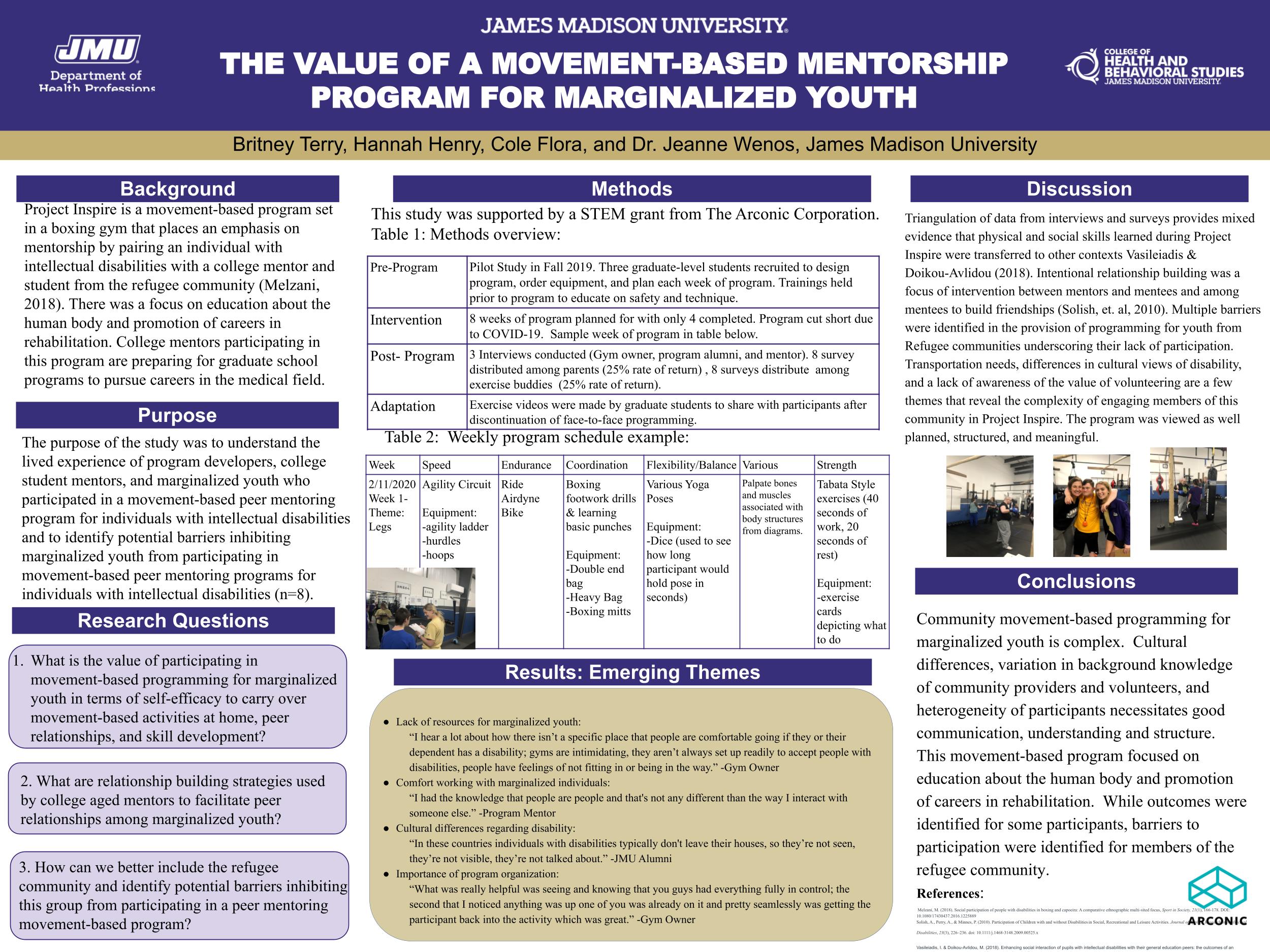The Value of a Movement-Based Mentorship Program for Marginalized Youth
Occupational Therapy
Purpose: To understand the lived experience of program developers, college student mentors, and marginalized youth who participated in a movement-based peer mentoring program for individuals with intellectual disabilities, and to identify potential barriers inhibiting marginalized youth from participating in movement-based peer mentoring programs for individuals with intellectual disabilities. There was a focus on Method: A phenomenological approach was undertaken in the design and analysis of the study of stakeholders for Project Inspire. Data was gathered through virtual interviews and surveys. Transcribed interviews and open-ended survey questions were coded and analyzed by the research team. Steps in the process involved individual coding via pre-determined themes followed by consensus coding to determine emerging themes. Frequency measures were used to compile survey data from objective questions. All participants gave consent to take part in the study. This study was supported by a STEM grant from the Arconic Corporation and presented locally by the Kawneer Company. Results: Predetermined themes were based upon the research questions guiding the study and included Carryover of physical and social skills from the program to another setting, Relationship building strategies, and Barriers to participation from the refugee community. Emerging themes were: Lack of resources for marginalized youth, Comfort working with marginalized individuals, Cultural differences regarding disability, and Importance of program organization. Conclusion: Community movement-based programming for marginalized youth is complex. Cultural differences, variation in background knowledge of community providers and volunteers, and heterogeneity of participants necessitates good communication, understanding and structure. This movement-based program focused on education about the human body and promotion of careers in rehabilitation. While outcomes were identified for some participants, barriers to participation were identified for members of the refugee community.

